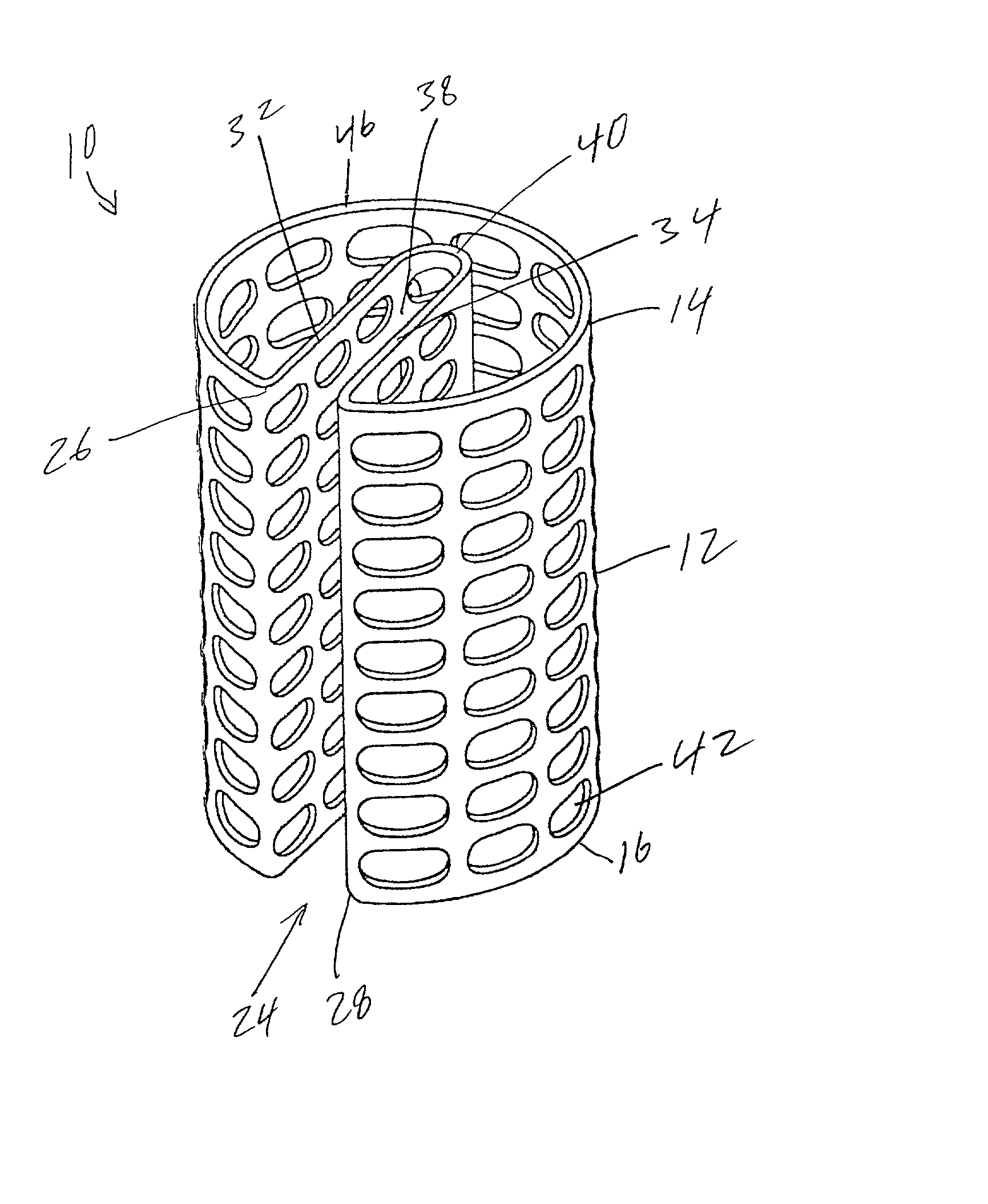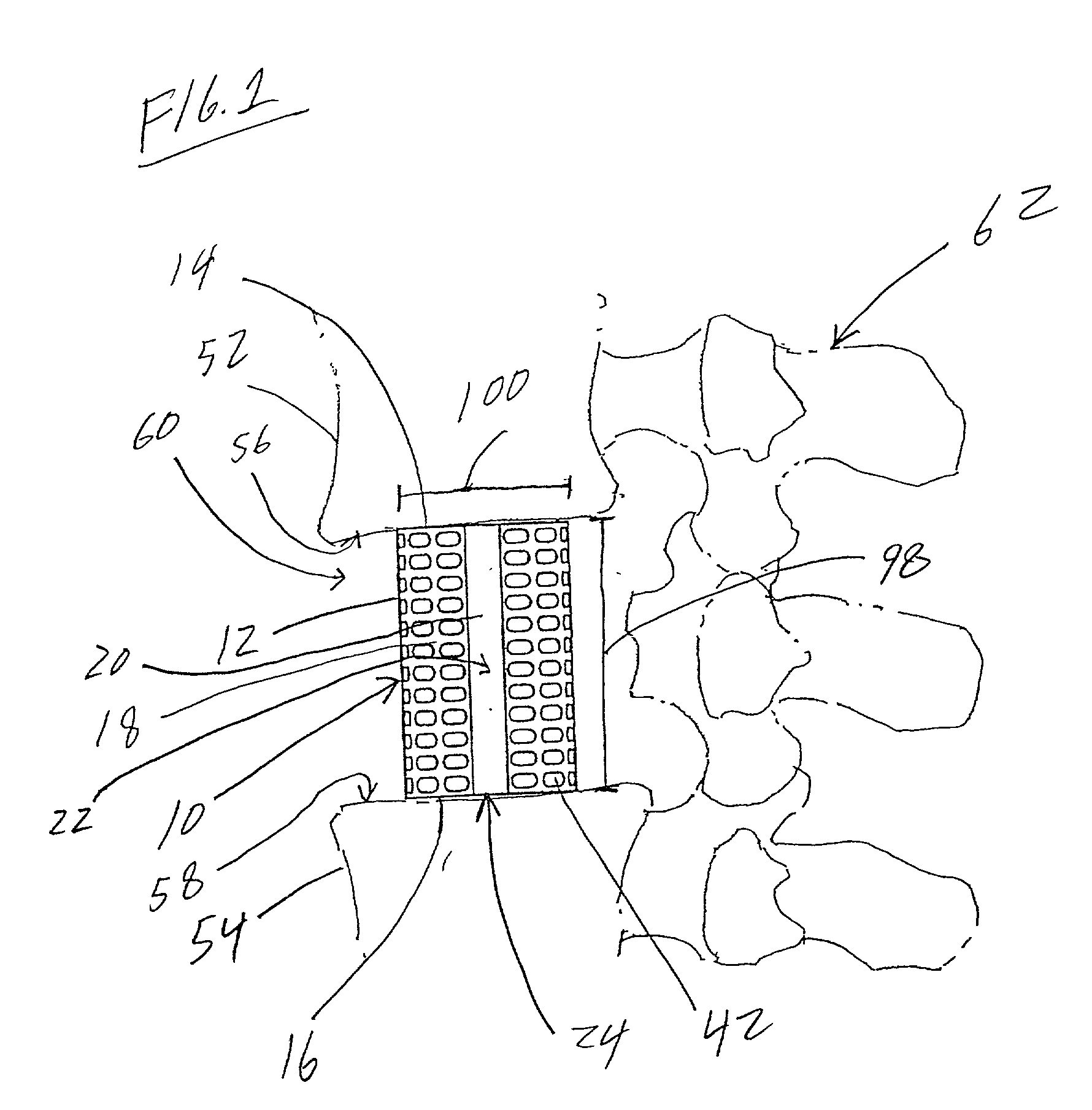Vertebral spacer for spinal stabilization
a technology of vertebral spacers and spacers, which is applied in the direction of internal osteosynthesis, prosthesis, osteosynthesis devices, etc., can solve the problems of time-consuming and dangerous, difficult, or impossible, to place an intermedullary rod after a cage-type spacer, and many of the devices presently available, especially cage-type spacers, to achieve the effect of reducing the risk of fracture, time-consuming and dangerous, and avoiding fractur
- Summary
- Abstract
- Description
- Claims
- Application Information
AI Technical Summary
Problems solved by technology
Method used
Image
Examples
second embodiment
[0057] In a second embodiment shown in FIGS. 4 and 5 the device 10 includes a first guide wall 32 extends inwardly from the edge 26 and a second guide wall 34 extends inwardly from the edge 28 to form a slot 36 into which an intermedullary rod 50 (shown in FIG. 8) may be positioned. Walls 32 and 34 are preferably parallel. Walls 32 and 34 act to guide a rod or other member into the slot 36. The walls 32 and 34 may be spaced to engage a rod and ensure proper placement of the device 10 into a spinal cavity or space already containing a rod therewithin.
third embodiment
[0058] In a third embodiment shown in FIGS. 6-8, the discontinuity 24 is configured as a groove or invagination 38. The groove 38 is comprised of the inwardly extending guide walls 32 and 34 which extend inward from the edges 26 and 28. In the present embodiment however, the walls 32 and 34 are continuous being joined together at a junction 40 to form the U-shaped groove 38. Groove 38 is constructed and arranged to receive an intermedullary rod 50 (shown in FIG. 8) between the walls 32 and 34. The position of the junction 40 allows the device 10 to engage a rod 50 already in place between spinal bodies, such that the rod acts as a guide post to ensure proper positioning of the device within a spinal cavity.
[0059] In the embodiments shown in FIGS. 2-7 the longitudinal discontinuity 24 will define a space of about 5 mm to about 10 mm between the first edge 26 and second edge 28.
[0060] In the various embodiments shown in FIGS. 1-8, the body 12 of device 10 may be constructed from any b...
PUM
| Property | Measurement | Unit |
|---|---|---|
| length | aaaaa | aaaaa |
| length | aaaaa | aaaaa |
| diameter | aaaaa | aaaaa |
Abstract
Description
Claims
Application Information
 Login to View More
Login to View More - R&D
- Intellectual Property
- Life Sciences
- Materials
- Tech Scout
- Unparalleled Data Quality
- Higher Quality Content
- 60% Fewer Hallucinations
Browse by: Latest US Patents, China's latest patents, Technical Efficacy Thesaurus, Application Domain, Technology Topic, Popular Technical Reports.
© 2025 PatSnap. All rights reserved.Legal|Privacy policy|Modern Slavery Act Transparency Statement|Sitemap|About US| Contact US: help@patsnap.com



